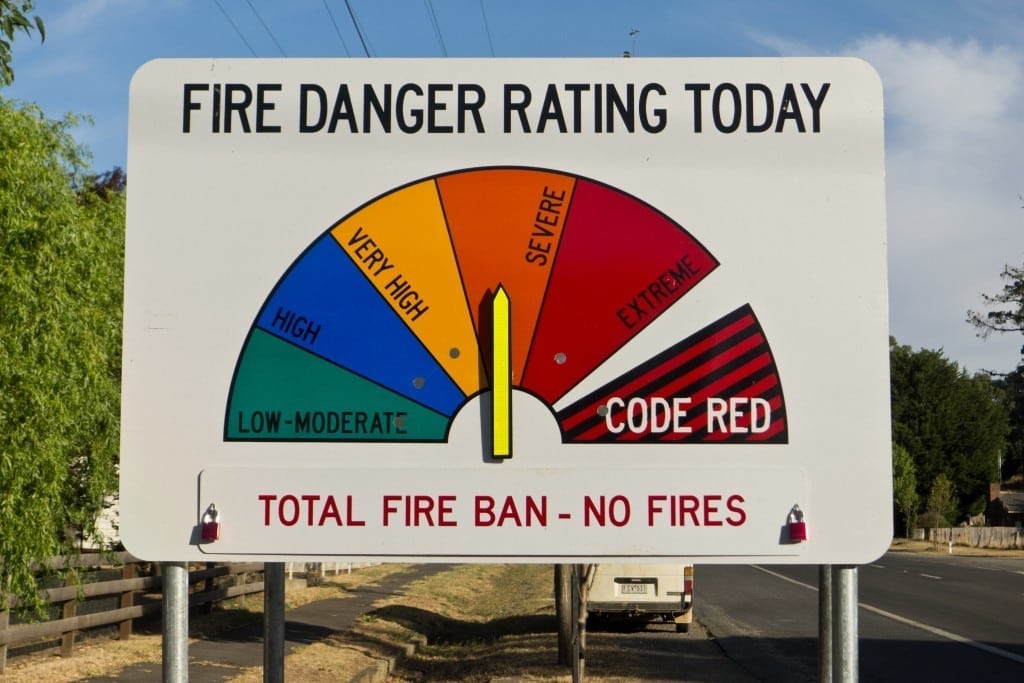WA BAL Report are committed to preventing loss of property and life from bushfires. This means conducting bushfire attack level assessment reports for those living in bushfire-prone areas. However, if you live in a bushfire-prone area, it is likely you will be required to do more to prepare yourself for a bushfire.
The Department of Fire and Emergency Services (DFES) has a Fire Danger Rating system to assist in determining the risk of bushfires for the day. You should familiarise yourself with the Fire Danger Rating system, what each category means, and be aware of the local conditions. The different Fire Danger Ratings are:
- Low-Moderate to High – if a fire starts, it is likely to be controlled in these conditions and homes can provide safety. Controlled burning may occur in these conditions if it is safe and permitted. Nevertheless, you should check your bushfire survival plan, monitor conditions and take action if required.
- Very High – these are hot, dry and possibly windy conditions for a bush or grass fire. If a fire starts and takes hold, it may be hard for firefighters to control. You need to be aware. Well prepared homes that are actively defended can provide safety, however you must ensure you are also physically and mentally prepared to defend in these conditions.
- Severe to Extreme – these are very hot, dry and windy conditions for a bush or grass fire. If a fire starts and takes hold, it will be unpredictable, move quickly and be difficult to bring under control. Spot fires will start and move quickly and embers may come from many directions. You need to get ready to act. Homes that are prepared to the highest level and have been constructed to bushfire protection levels and are actively defended may provide safety, however you must be physically and mentally prepared to defend in these conditions. Only stay with your property if the home is very well prepared, including construction to bushfire protection levels, such as enclosed eaves, covers over external air conditioners, metal flyscreens, etc. You must also have the right equipment and resources to put out the fire. If you are not sufficiently prepared, it is safest to leave bushfire risk areas early in the day.
- Catastrophic – these are the worst conditions for a bush or grass fire. Fires will be extremely difficult to control and will require significant firefighting resources and cooler conditions to bring under control. Homes are simply not designed or constructed to withstand these conditions. You need to act now. The only safe place is to be away from the bushfire risk areas. You should put your survival first and leave the bushfire risk area the night before or early in the day. Do not wait and see. If it is unsafe or you are unable to leave, take shelter in your home.
No fires may be lit on days when the fire danger forecast for the area is Very High, Severe, Extreme or Catastrophic, or a Total Fire Ban has been declared.
WA BAL Report hopes that, with this information, you can better assess the bushfire risk and make the appropriate decision in the circumstances. As always, remember that fires can threaten suddenly and without warning and are very unpredictable. You should watch for signs of fire, especially smoke and flames, and have your bushfire survival plan and kit ready.
For more information
WA BAL Report are experts at conducting Bushfire Attack Level Assessments, Bushfire Attack Level Reports and bushfire prevention strategies in general in Perth and Western Australia. For more information, contact our friendly staff on 08 6114 9356 or at admin@wabalreport.com.au.
Thank you for visiting www.wabalreport.com.au


1 thought on “About the Fire Danger Ratings”